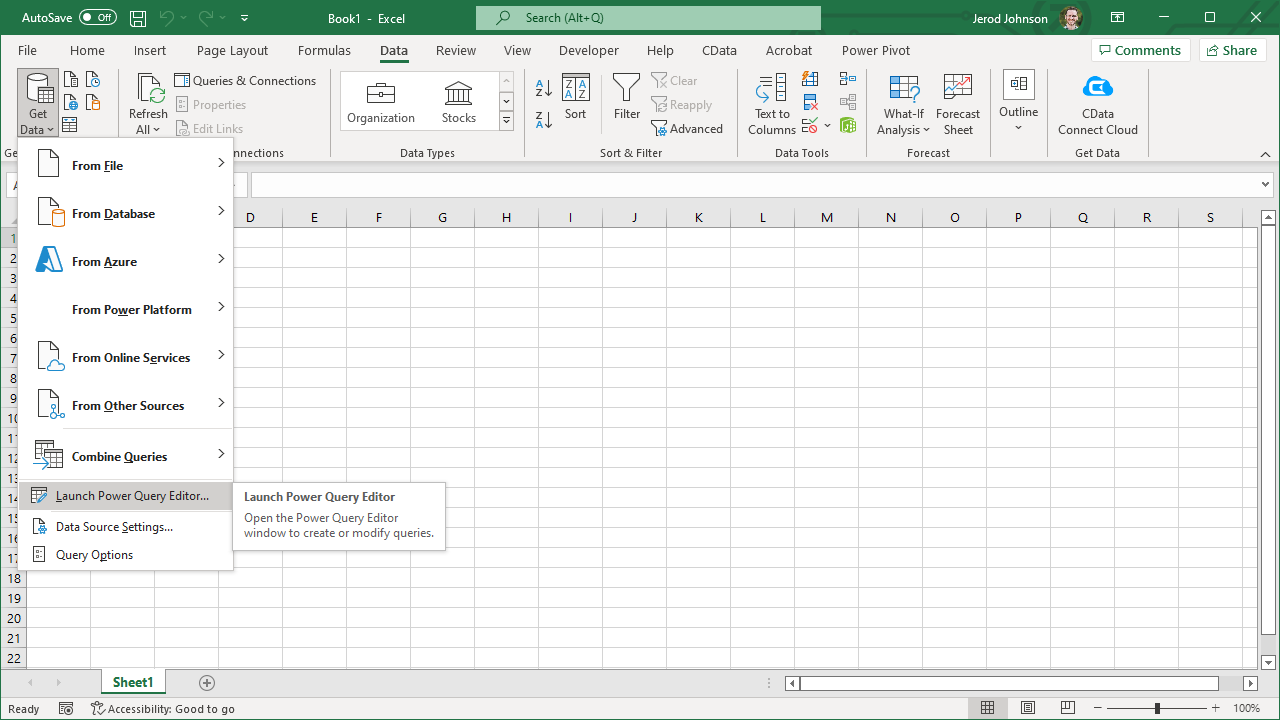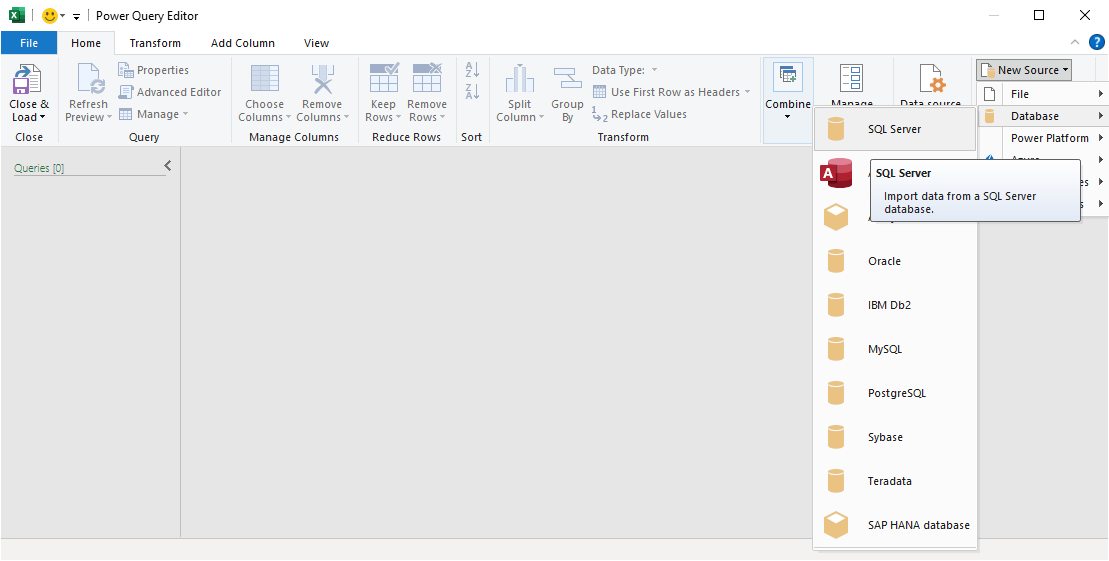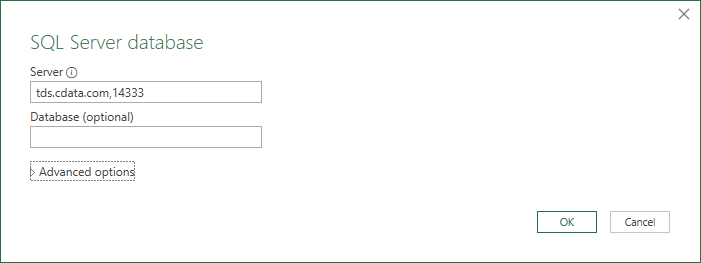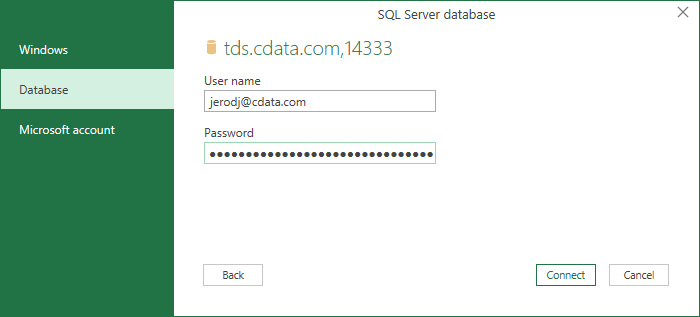Model Context Protocol (MCP) finally gives AI models a way to access the business data needed to make them really useful at work. CData MCP Servers have the depth and performance to make sure AI has access to all of the answers.
Try them now for free →Work with Live Databricks Data in Power Query
Use CData Connect Cloud to connect to Databricks data and work with live Databricks data in Microsoft Power Query.
Power Query is a data transformation and data preparation engine. When paired with CData Connect Cloud, you get instant, cloud-to-cloud access to Databricks data from Power Query. This article shows how to connect to Connect Cloud from Power Query through Microsoft Excel and get live access to Databricks data for transformation and preparation.
CData Connect Cloud provides a pure SQL, cloud-to-cloud interface for Databricks, allowing you to easily integrate with live Databricks data in Power Query — without replicating the data. CData Connect Cloud looks exactly like a SQL Server database to Power Query and uses optimized data processing out of the box to push all supported SQL operations (filters, JOINs, etc) directly to Databricks, leveraging server-side processing to quickly return Databricks data.
About Databricks Data Integration
Accessing and integrating live data from Databricks has never been easier with CData. Customers rely on CData connectivity to:
- Access all versions of Databricks from Runtime Versions 9.1 - 13.X to both the Pro and Classic Databricks SQL versions.
- Leave Databricks in their preferred environment thanks to compatibility with any hosting solution.
- Secure authenticate in a variety of ways, including personal access token, Azure Service Principal, and Azure AD.
- Upload data to Databricks using Databricks File System, Azure Blog Storage, and AWS S3 Storage.
While many customers are using CData's solutions to migrate data from different systems into their Databricks data lakehouse, several customers use our live connectivity solutions to federate connectivity between their databases and Databricks. These customers are using SQL Server Linked Servers or Polybase to get live access to Databricks from within their existing RDBMs.
Read more about common Databricks use-cases and how CData's solutions help solve data problems in our blog: What is Databricks Used For? 6 Use Cases.
Getting Started
Configure Databricks Connectivity for Power Query
Connectivity to Databricks from Power Query is made possible through CData Connect Cloud. To work with Databricks data from Power Query, we start by creating and configuring a Databricks connection.
- Log into Connect Cloud, click Connections and click Add Connection
![Adding a Connection]()
- Select "Databricks" from the Add Connection panel
![Selecting a data source]()
-
Enter the necessary authentication properties to connect to Databricks.
To connect to a Databricks cluster, set the properties as described below.
Note: The needed values can be found in your Databricks instance by navigating to Clusters, and selecting the desired cluster, and selecting the JDBC/ODBC tab under Advanced Options.
- Server: Set to the Server Hostname of your Databricks cluster.
- HTTPPath: Set to the HTTP Path of your Databricks cluster.
- Token: Set to your personal access token (this value can be obtained by navigating to the User Settings page of your Databricks instance and selecting the Access Tokens tab).
![Configuring a connection (Salesforce is shown)]()
- Click Create & Test
- Navigate to the Permissions tab in the Add Databricks Connection page and update the User-based permissions.
![Updating permissions]()
Add a Personal Access Token
If you are connecting from a service, application, platform, or framework that does not support OAuth authentication, you can create a Personal Access Token (PAT) to use for authentication. Best practices would dictate that you create a separate PAT for each service, to maintain granularity of access.
- Click on your username at the top right of the Connect Cloud app and click User Profile.
- On the User Profile page, scroll down to the Personal Access Tokens section and click Create PAT.
- Give your PAT a name and click Create.
![Creating a new PAT]()
- The personal access token is only visible at creation, so be sure to copy it and store it securely for future use.
With the connection configured, you are ready to connect to Databricks data from Power Query.
Working with Live Databricks Data in Power Query
With the connection to Connect Cloud configured, you are ready to work with live Databricks data in Power Query.
- In Microsoft Excel, open the Power Query Editor (from the Data ribbon, click Get Data -> Launch Power Query Editor)
![Opening the Power Query Editor]()
- Click New Source -> SQL Server
![Creating a new SQL Server Source]()
- In the SQL Server database modal:
- Set Server to tds.cdata.com,14333
- (Optional) Set Database to the name of the Databricks connection (e.g. Databricks1 )
![Configuring the Server]()
- In the SQL Server credentials modal, select "Database" and
- Set User to your Connect Cloud username (e.g. user@mydomain.com )
- Set Password to the PAT for the above user
![Configuring the credentials]()
- Click Connect
- Select the table(s) you wish to work with in the Navigator and click "OK"
![Selecting the table(s) (Salesforce is shown)]()
At this point, you have live access to Databricks data from Power Query for transformation and preparation.
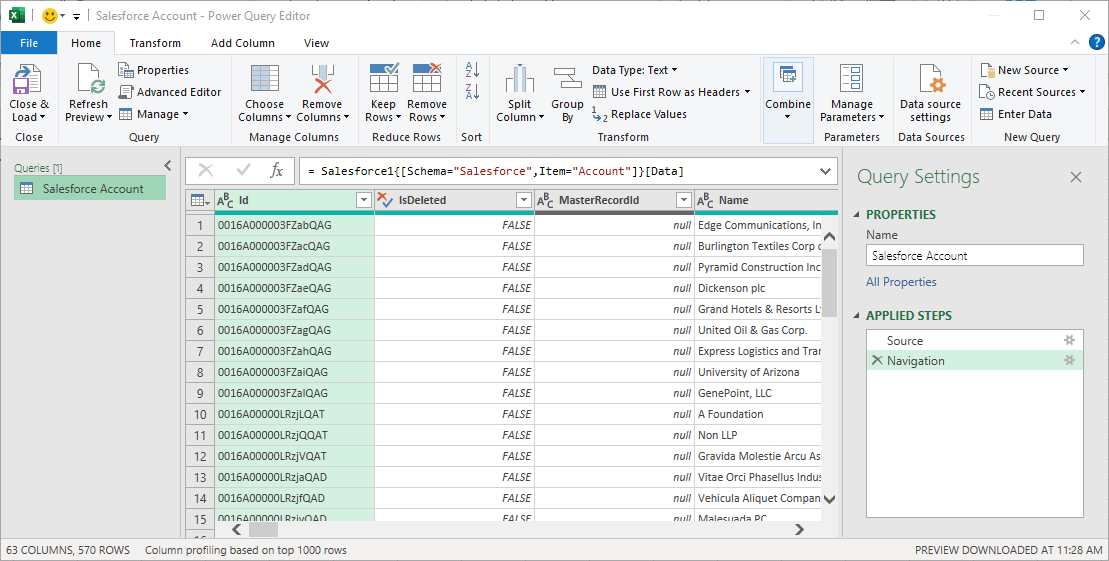
SQL Access to Databricks Data
Now you have a direct connection to live Databricks data from Microsoft Power Query. You can create more connections and transform and preparte your data to better drive business — all without replicating Databricks data.
To get real-time data access to 100+ SaaS, Big Data, and NoSQL sources directly from your cloud applications, sign up for a free trial of CData Connect Cloud.






